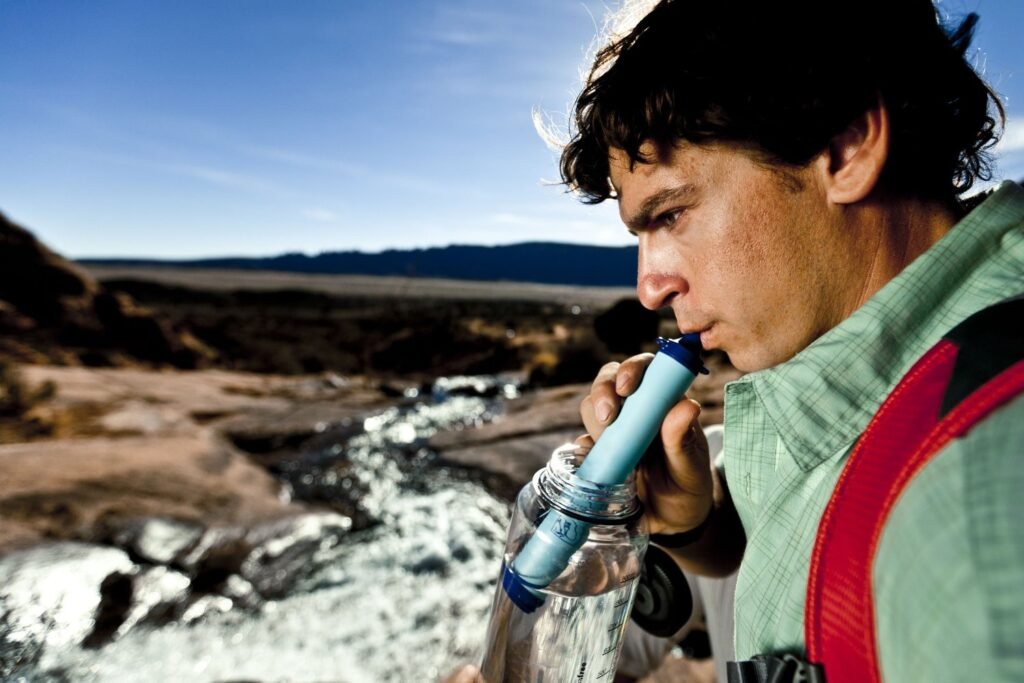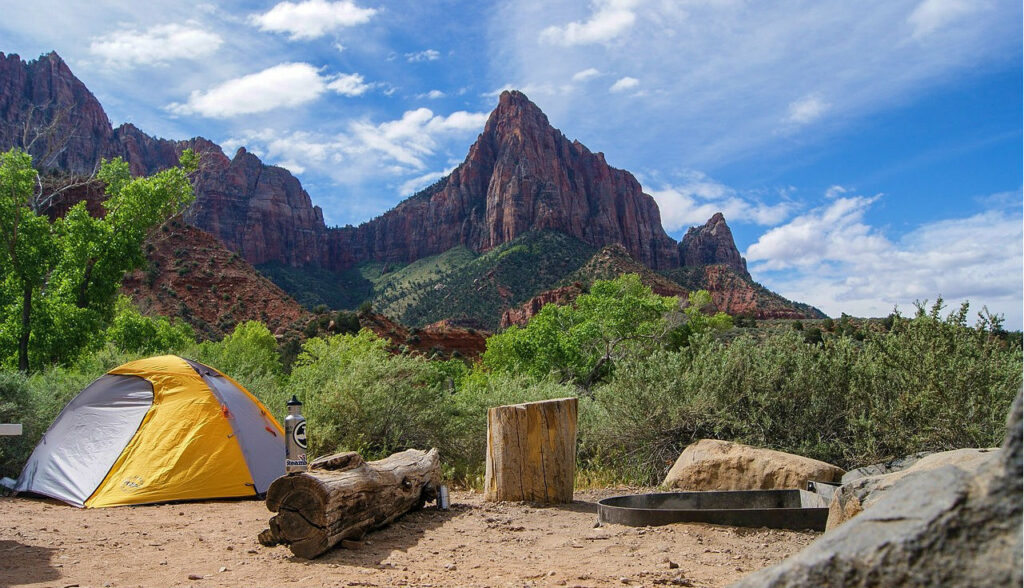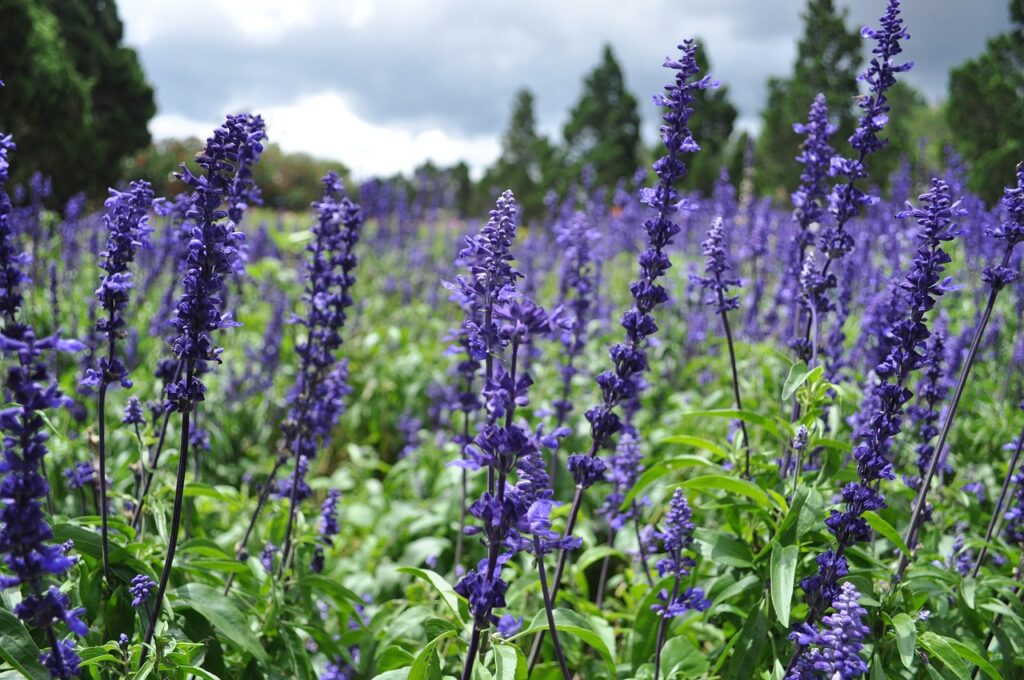LifeStraw Review: The Best Water Filter for Camping and the Outdoors
If you compare LifeStraw to other water filters, you’ll find that this particular water filter is quite popular among campers and outdoor enthusiasts. Having been invented in 2005, LifeStraw has gone on to win many awards since its creation.
- LifeStraw Background and Benefits
- Why LifeStraw is the Best Portable Water Filter
- Wrapping Up
- Lifestraw FAQs
- What types of contaminants does the LifeStraw filter remove?
- How does the filtered water taste compared to unfiltered water?
- How long does each LifeStraw filter last?
- What are the pros of the LifeStraw for outdoor use?
- What are the downsides to the LifeStraw?
- Is the LifeStraw flow rate fast enough to quench thirst during activities?
- How durable is the LifeStraw for backpacking and camping?
- Is the LifeStraw ideal for international travel?
- How does LifeStraw compare to other camping water filters?
- What is the best way to backflush and clean the LifeStraw between uses?
After eight years of a proven track record around the world and increasing popularity among consumers in developed nations, LifeStraw went on to create a more diverse product selection.
Their products now include many various configurations, including the traditional straw design, bottle filters, bagged gravity filters, and “family” filtration. All of their filter options are exceptionally effective for their intended uses and are priced reasonably.
Their particular filtration technology has been used extensively around the world in 64 countries following the aftermath of natural disasters that limited or cut off clean water supplies. To read more about their mission of fixing the problem of unsafe and tainted drinking water worldwide, check out their website.
LifeStraw was created as an effort to improve the health and quality of life for people in developing countries who simply have no access to clean drinking water. Thus, their products are used and distributed globally on a daily basis for humanitarian aid purposes. Their technology also surpasses EPA guidelines. On their website, they state that for each LifeStraw purchased, one school child in a developing community will receive safe drinking water for an entire school year.
In more developed countries, their products are available and very popular among consumers for various water filtration needs. They’re especially in high demand for individuals and families who enjoy outdoor activities like hiking and fishing trips, camping, and those unavoidable emergency situations.
When it comes to camping, a clean water supply is an absolute necessity. But nowadays, there’s really no reason for packing gallons and gallons of water for your camping trip, not with products like LifeStraw. That is, of course, if you’ll be near a water source.
LifeStraw Background and Benefits
The original LifeStraw product is exceptional for all kinds of outdoor uses. It’s basically a straw filter that ensures your water supply is safe by eliminating protozoa and bacteria. So, whether your nearest water source is a creek, pond, or lake, you can rest assured that the water entering your body is clean and free from bacteria.
The straw design is obviously for individual use, but, as mentioned earlier, LifeStraw also has a variety of other options. So, whether you need an outdoor filter for yourself individually, your entire family campsite, or just prefer a self-filtering water bottle, they’ve got an option that will perfectly meet your needs.
Why LifeStraw is the Best Portable Water Filter
Safe drinking water is a must when venturing outdoors. On trips that are supposed to be enjoyable, the last thing I’d want for anyone in my family would be for them to become ill from drinking water from an unsafe water source. So, any water used for drinking needs to be reliably and dependably safe, each and every sip.
Easy to Use and Clean
The basic LifeStraw filter version is amazingly easy to use. All you’ve got to do is suck the water up through the straw-like filter, just as with any normal straw. It is no doubt the simplest filter to use, especially with children. LifeStraw is also equipped with an instruction leaflet to guide the user on how to use it. Also, if you’d prefer a water bottle design instead, they have a bottled version with theLlifeStraw built-in. So, with the bottled version, water is filtered right in the water bottle.
Cleaning Lifestraw is easily done by simply sucking clean water into the filter and blowing it out after each use. It’s suggested that the filter is left to air dry before being stored. Compared to other filters, it just can’t get any easier.
Efficient and Saves Time
LifeStraw has a hollow fiber membrane that allows it to efficiently filter out bacteria and protozoa. It is very important to take note that the basic LifeStraw does not do away with viruses, heavy metals, salts, or chemicals. Therefore, it’s recommended to use the LifeStraw Family or LifeStraw Mission if near a heavily populated area or large campsite. Either of those two options will protect against viruses, protozoa, and bacteria.
Personally, if I were just camping with family out in the wild, the basic LifeStraw would be my filter of choice. Also, they do have a stainless steel straw version, which removes organic chemical matter and chlorine but not viruses. Whenever you’re thirsty, all you do is simply kneel down to your water source and sip away! Without the need to boil water at your campsite, this filter is definitely a time saver.
Tough and Durable
LifeStraw Original has the capability to filter approximately 1000 liters (264 gallons) of water during its lifetime. That’s enough for an entire year of use if used daily. If only used occasionally, this filter could last for many years. When a filter begins to reach the end of its lifetime, it will gradually lose its ability to draw water from the water source.
When the filter is completely unable to be used, it won’t be possible to suck any more water through it. Therefore, it’s not possible for any water sipped through a LifeStraw to be contaminated. If the water goes through the filter, it’s safe, period.
LifeStraw Mission and LifeStraw Family have water filtration capabilities of 18,000 liters (4,755 gallons) each. That’s enough to provide a family of 5 filtered water for up to 3 years if used daily! Again, if these filters are only used for the occasional camping trip, they could last an incredible amount of time, much longer than 3 years.
Due to their extensive use worldwide, LifeStraw filters are extremely durable and reliable. Any company that has had products used for large-scale humanitarian aid for over a decade can be trusted when it comes to quality. Also, all of their filter products are BPA-free. LifeStraw products virtually have an infinite shelf life if not in use.
Small in Size, Lightweight, and Easy to Store
It’s important to allow your LifeStraw to dry if you’ll be storing it for a long period of time.
LifeStraw is small in size, so it’s incredibly versatile and easy to pack. That means each member of your family could have their own LifeStraw on your camping trip. All you’d have to do to prevent them from getting mixed up is to write each person’s name on their own individual straw with a permanent marker.

I’d also suggest teaching each family member to keep their LifeStraw with them whenever venturing away from camp. Since each filter is very small and light, this shouldn’t be a problem at all.
Also, most of us carry a water bottle anyway, so you could also just opt for the filtered water bottle version instead. I know it’s rare for people to get lost when camping, but if they always had a safe source of water, they’d dramatically increase their survival chances by that fact alone.
LifeStraw is light in weight, which means it is appropriate for traveling, hiking trips, fishing trips, and camping. It is also highly recommended for emergencies. Furthermore, it wouldn’t be a bad idea to keep one of the Mission or Family versions around the house if you live in a very rural or isolated area. Without a backup generator for your well or fresh rain, it might be difficult to find a clean water source!
Very Effectively Filters Water
LifeStraw exceeds EPA guidelines; what else needs to be said? Remember, this isn’t a filter for everyday use in your home; it’s for outdoor and survival use. So, all that’s really important is that it effectively removes those things that make you sick: bacteria and protozoa.
That being said, they have varying kinds of filters for different uses, as I mentioned a bit ago. If you’re looking for something to be used for more thoroughly filtering drinking water in the home, you should read our review of the Clearly Filtered Clean Water Pitcher.
Even though the filter may filter out bacteria and protozoa, the taste of the water won’t change all that much unless you’re using the stainless steel version. So, the LifeStraw effectively filters water for its intended purpose and, again, does exceed EPA guidelines.
Very Inexpensive
The prices of all the LifeStraw products are extremely reasonable if not dirt cheap. If your family only camps a few times a year, any of the filter options could last for many years to come. That means that you won’t ever have to worry about a clean water source on countless camping trips to come.
But even for those who may actually need to use LifeStraw on a daily basis (missionaries, people living in the bush, etc.), it’s still dirt cheap, in my opinion. Even with the Mission and Family LifeStraw models, we’re talking about years and years of safe drinking water. Twenty dollars or so for multiple years of daily bacteria-free water is an exceptional price point.
I actually think they could charge more, but we don’t need to let them know that.
Wrapping Up
Clean drinking water is a necessity. Unfortunately, we might not always have access to it. For those of us who love hiking, camping, fishing, or any other outdoor activity that takes us out into the wild, safe drinking water isn’t just a preference; it’s a requirement. Even when water is packed along with everything else, it’s an expendable resource that probably won’t last nearly as long as you’d like.
Plus, who wants to pack and carry a bunch of water anyway?
LifeStraw is a camping necessity your family will love. What more can be said? Lifestraw is extensively used all over the world for humanitarian aid, approved by the EPA, given away to millions after natural disasters, is very durable, dirt cheap, and quite easy to use.
So, as long as you can find a water source, there’s no longer any need to bring water with you on your adventures. There’s also no need to ever drink from a potentially dangerous water source ever again, not with LifeStraw.
Lifestraw FAQs
What types of contaminants does the LifeStraw filter remove?
It removes 99.9999% of waterborne bacteria, parasites, microplastics, dirt, and cloudiness, with a pore size of 0.2 microns.
How does the filtered water taste compared to unfiltered water?
Most reviews say the filtered water tastes quite clean and neutral, with no unpleasant aftertaste.
How long does each LifeStraw filter last?
The filter is designed to purify up to 1,000 gallons (4,000 L) of water, which is impressive.
What are the pros of the LifeStraw for outdoor use?
It’s lightweight, portable, requires no batteries/power, and filters water instantly without priming.
What are the downsides to the LifeStraw?
You can’t store filtered water since it’s a personal straw-style filter with no reservoir or bottle. If you want to use a Lifestraw with a body, they have filter bottles available here.
Is the LifeStraw flow rate fast enough to quench thirst during activities?
Some reviews complain of a slow flow rate, making it hard to drink quickly while hiking or camping.
How durable is the LifeStraw for backpacking and camping?
The plastic body is flimsy, but it can withstand being smashed, bent, or frozen without filter damage.
Is the LifeStraw ideal for international travel?
Yes, it removes bacteria and protozoa that cause waterborne diseases, making it great for travel abroad.
How does LifeStraw compare to other camping water filters?
It’s more portable but doesn’t allow for water storage. Gravity filters are slower but have reservoirs. Lifestraw has reservoir products available as well.
What is the best way to backflush and clean the LifeStraw between uses?
Run clean water back through the outlet end and shake vigorously to flush out debris.



Very handy information, perfect for adventure, especially for the need of a clean emergency water source .
Thanks for the comment!